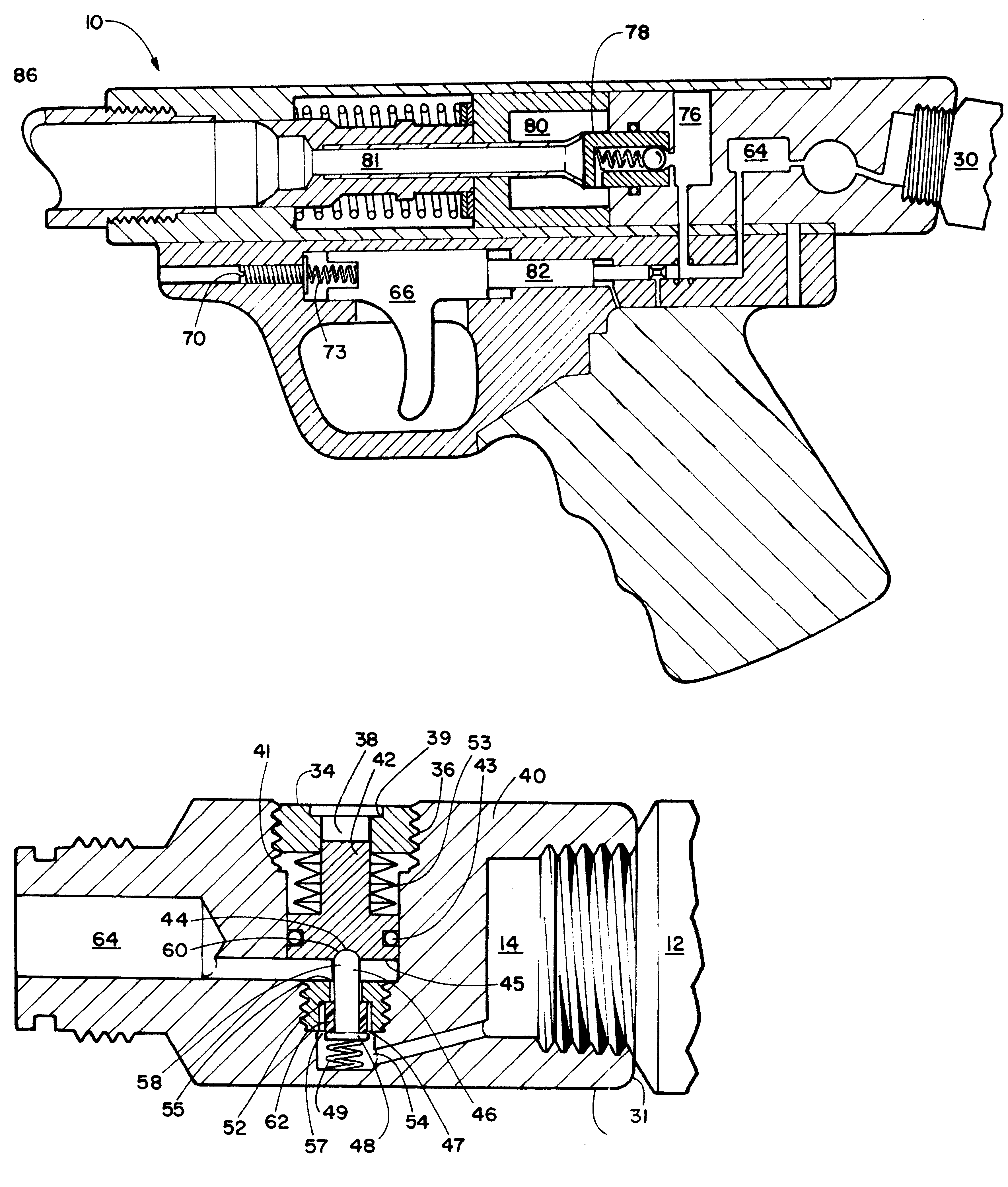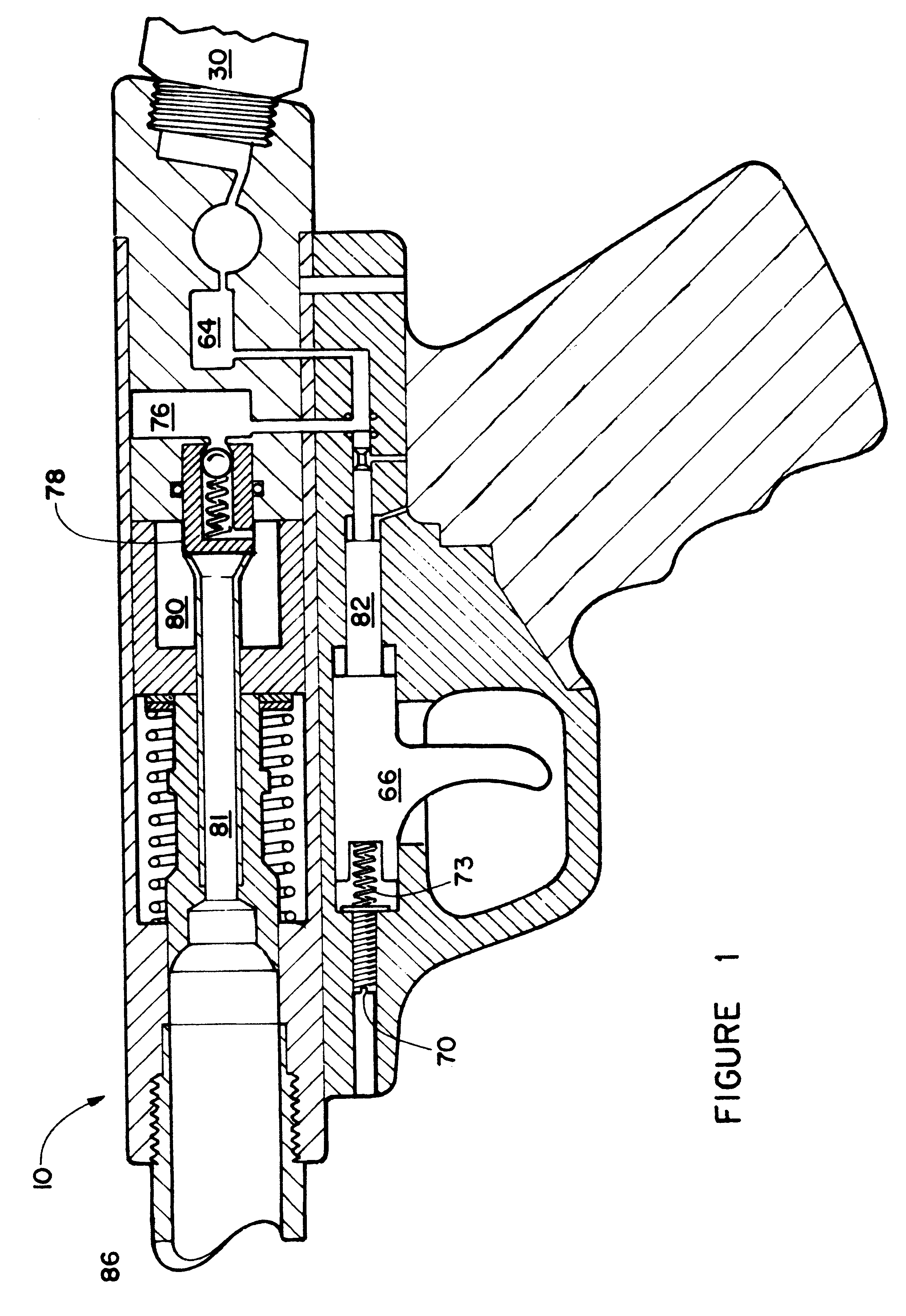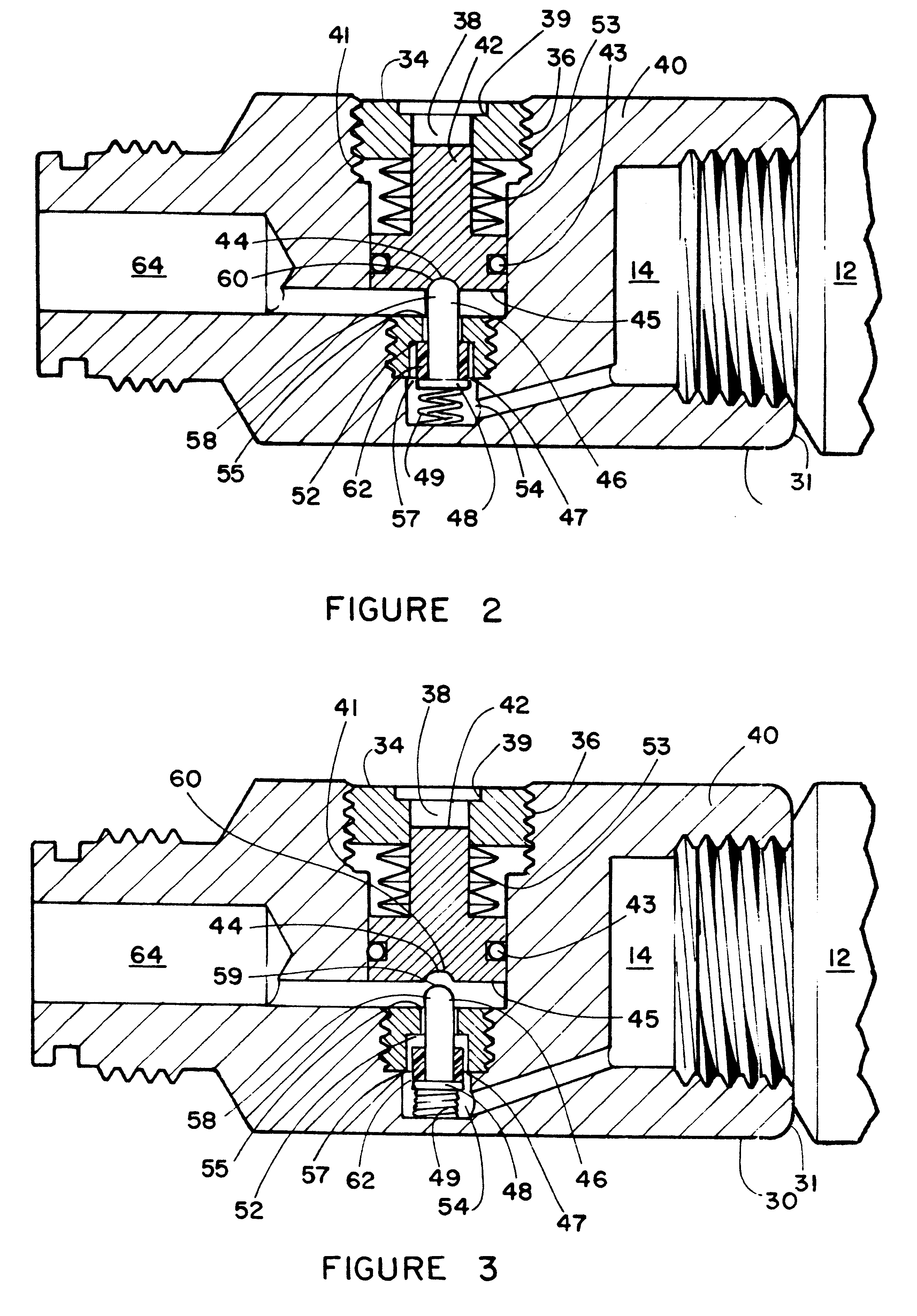Gas powered gun and assemblies therefor
a gas-powered gun and gas-powered technology, applied in the field of guns, can solve the problems of affecting the performance of guns using conventional regulators
- Summary
- Abstract
- Description
- Claims
- Application Information
AI Technical Summary
Benefits of technology
Problems solved by technology
Method used
Image
Examples
Embodiment Construction
Referring now to the drawing figures which depict the preferred embodiments of the invention disclosed herein, specifically FIG. 1 is a cut away side view of an improved air gun 10 showing having a regulator means shown by the improved regulator 30 which receives highly pressurized gas from a conventional gas supply such as a pressurized canister 12 and reduces the pressure of pressurized gas received from the canister to a gas pressure desired or required to operate the gun 10.
Also shown is the air biased trigger mechanism 62 which is biased by regulated gas communicated from the regulator 30 and an adjustable rearward biasing mechanism such as a trigger spring 73 adjustable for rearward bias by trigger spring adjustment screw 79. Additional pictured is the muzzle break 70 featuring a plurality of elongated slots 72 having angled side walls 74 for better parsing of gas propellent away from any projectile being fired.
FIGS. 2 and 3 are a cut away side views of the regulator 30 in a p...
PUM
 Login to View More
Login to View More Abstract
Description
Claims
Application Information
 Login to View More
Login to View More - R&D
- Intellectual Property
- Life Sciences
- Materials
- Tech Scout
- Unparalleled Data Quality
- Higher Quality Content
- 60% Fewer Hallucinations
Browse by: Latest US Patents, China's latest patents, Technical Efficacy Thesaurus, Application Domain, Technology Topic, Popular Technical Reports.
© 2025 PatSnap. All rights reserved.Legal|Privacy policy|Modern Slavery Act Transparency Statement|Sitemap|About US| Contact US: help@patsnap.com



